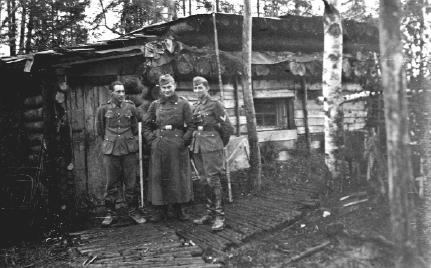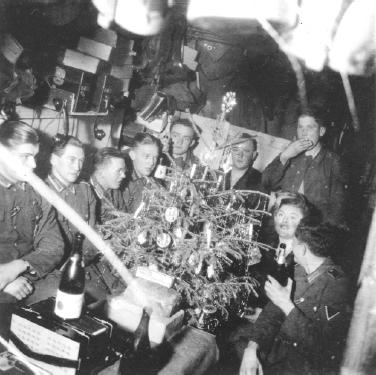Hela — Hel
Heyderkrug — Silute
Konigsburg — Kaliningrad
Krasnogvardeisk — Gatcina
Kurisches Haff — Curonian Bay
Kurische Nehrung — Curonian Isthmus
Labiau — Polessk
Lake Peipus — Lake Chudskoye
Leningrad — St. Petersburg
Libau — Liepaja
Memel — Klaipeda
Oranienbaum — Lomonosov
Pillau — Baltiysk
Reval — Tallinn
Stutthof — Sztutowo
Tilsit — Sovetsk
Weichsel River Estuary — Vistula River Estuary
APPENDIX C
TABLE OF EQUIVALENT RANKS
This is a list of German ranks and the approximate English equivalents as indicated in the book. Please note that this list does not include all ranks and that some of the ranks are translated differently in other sources.
Oberst — colonel
Oberstleutnant — lieutenant colonel
Major — major
Hauptmann — captain
Rittmeister — cavalry captain
Oberleutnant — first lieutenant
Leutnant — second lieutenant
Oberfahnrich — senior officer candidate
Fahnrich — junior officer candidate
Hauptfeldwebel — senior sergeant
Oberfeldwebel — staff sergeant
Feldwebel — sergeant
Unteroffizier — corporal
Obergefreiter — lance corporal
Gefreiter — private first class
Schutze — private
The 154th Infantry Regiment, in which I served from 1939 to 1945, suffered total casualties as follows: 300 officers of which 73 were killed; 2,241 non-commissioned officers of which 485 where killed; and 10,810 other enlisted personnel of which 1,824 were killed. Of its total of 13,351 casualties, 2,382 were killed, 10,021 were wounded, and 948 soldiers were listed as missing. Among the divisions in Army Group North, the 58th Infantry Division received the second highest number of decorations.[2]
 Studio portrait taken during basic training in Luneburg, Germany in 1939, shortly after conscription into the German Army.
Studio portrait taken during basic training in Luneburg, Germany in 1939, shortly after conscription into the German Army.  Swearing the Wehrmacht loyalty oath in Luneburg on September 2, 1939, the day after Germany’s invasion of Poland.
Swearing the Wehrmacht loyalty oath in Luneburg on September 2, 1939, the day after Germany’s invasion of Poland.  Visiting my family in Puggen early in 1940.
Visiting my family in Puggen early in 1940.  Above: Pushing for a win in Verviers, Belgium, at the end of the 154th Regiment’s 400-meter race in summer 1940.
Above: Pushing for a win in Verviers, Belgium, at the end of the 154th Regiment’s 400-meter race in summer 1940.  Left: Practicing with a radio as part of my training with the communications platoon during fall 1939.
Left: Practicing with a radio as part of my training with the communications platoon during fall 1939.  Below: A crater made by a shell from the Russian battleship Red October.
Below: A crater made by a shell from the Russian battleship Red October.  Our company’s march through the Baltic region toward Leningrad in the summer of 1941. I am pictured to the left rear of our company commander, Oberleutnant Von Kempski.
Our company’s march through the Baltic region toward Leningrad in the summer of 1941. I am pictured to the left rear of our company commander, Oberleutnant Von Kempski.  Below, left: A photograph from Uritsk used on the front page of a German-language newspaper in Reval, Latvia, dated April 2, 1942. The caption reads, “This is the German soldier who you will find in the trenches: young, agile, and sure of victory.”
Below, left: A photograph from Uritsk used on the front page of a German-language newspaper in Reval, Latvia, dated April 2, 1942. The caption reads, “This is the German soldier who you will find in the trenches: young, agile, and sure of victory.”  Below, right: Another photo taken in the spring of 1942.
Below, right: Another photo taken in the spring of 1942.  Left, and with detail above: The “Old Sacks” bunker at Uritsk that I shared with my close comrades Willi Schutte and Willi Sauke.
Left, and with detail above: The “Old Sacks” bunker at Uritsk that I shared with my close comrades Willi Schutte and Willi Sauke.  A crossroads in the late fall of 1941 with a sign pointing to Petersburg (Leningrad).
A crossroads in the late fall of 1941 with a sign pointing to Petersburg (Leningrad).  Below, left: Skiing between the front and my bunker in the rear at Uritsk during the winter of 1941–42. Below, right: Taken at Uritsk after my promotion to Obergefreiter (corporal) and my receipt of the Iron Cross Second Class.
Below, left: Skiing between the front and my bunker in the rear at Uritsk during the winter of 1941–42. Below, right: Taken at Uritsk after my promotion to Obergefreiter (corporal) and my receipt of the Iron Cross Second Class.  Standing between two comrades outside of our bunker at Oranienbaum in the summer of 1942.
Standing between two comrades outside of our bunker at Oranienbaum in the summer of 1942.  Below: My comrades and I celebrate Christmas 1942 in our bunker near Demyansk.
Below: My comrades and I celebrate Christmas 1942 in our bunker near Demyansk. 
















